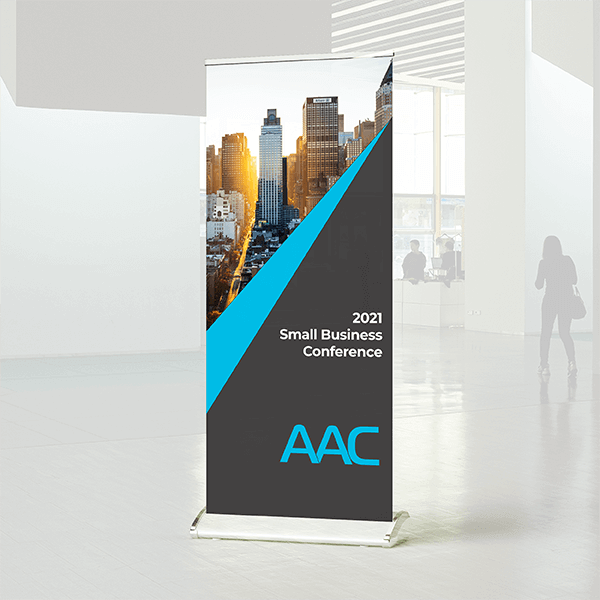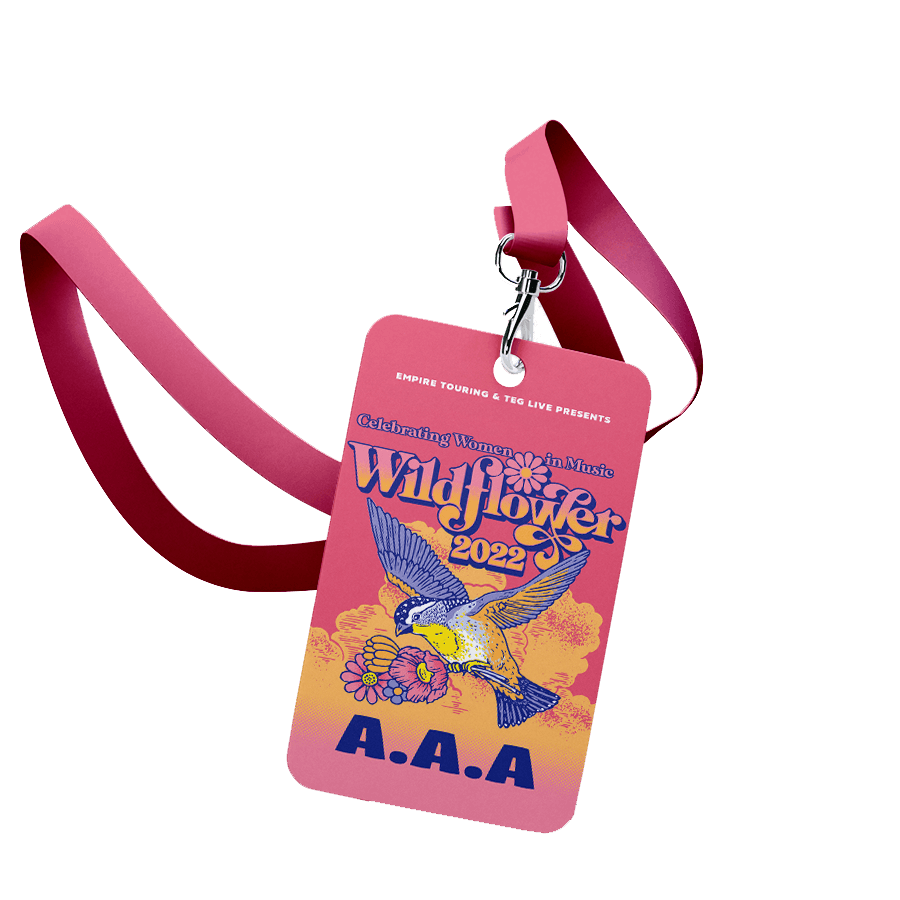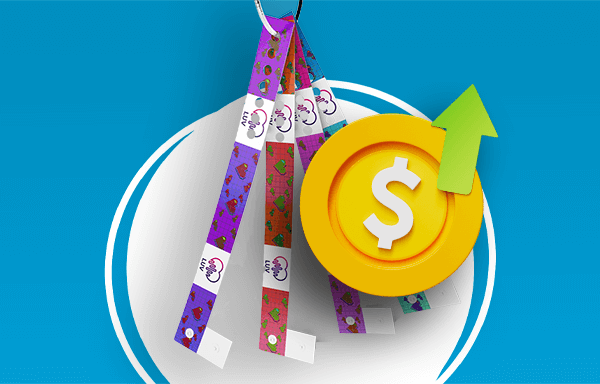
Investing In Event Wristbands For Organisers
If you’re planning an event or running a venue, you know how important it is to have a reliable and secure way of managing access. You want to ensure that only the people who have paid for a ticket or have the right credentials can enter your event or venue, and that no one can sneak in or cheat their way in. That’s why you need this guide on event wristbands for organisers.
Event organisers should recognise that not all wristbands are created equal. Cheap imitator wristbands are cheap, flimsy, and easy to tamper with, while others are high-quality, durable, and tamper-proof. Some wristbands are sourced from reputable Australian manufacturers, while others are imported from dubious overseas suppliers. Some wristbands are backed by a trusted and experienced company, while others are sold by fly-by-night operators. So, when you’re searching for a billion different suppliers for a million different products, event wristbands become a headache for organisers
How do you tell the difference? How do you know that you’re getting the best value for your money? Do you know that you’re not putting your event or venue at risk by using inferior wristbands?
In this article, we’ll be the panadol to your wristband headache. We’re going to breakdown a comprehensive guide on event wristbands for organisers. We’ll reveal the truth behind the wristband industry and show you why quality matters, how AAC’s wristbands are so much more than “just a wristband.” And we’ll illustrate how you will loose money and jeopardise your reputation if you’re shopping purely for the lowest price.
Let’s begin!
Why Quality Matters In Event Wristbands For Organisers
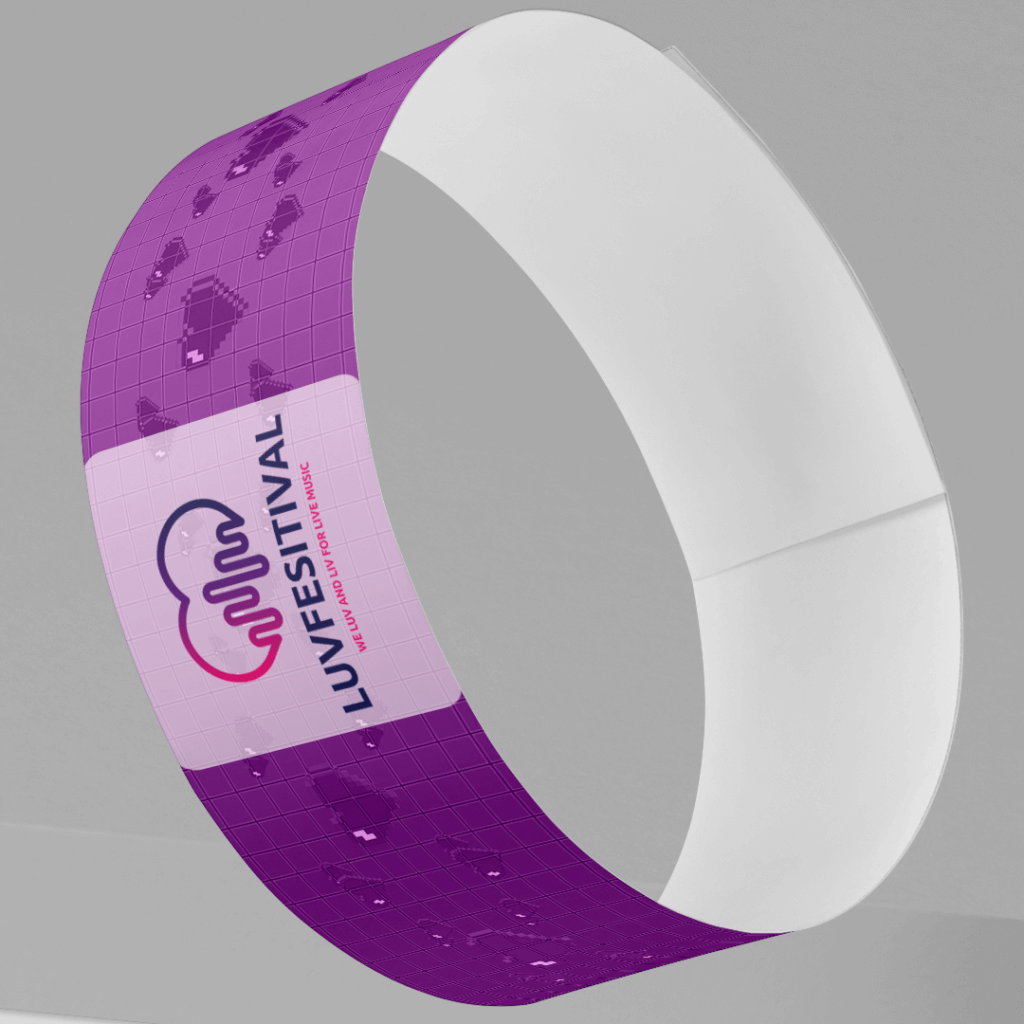
When it comes to wristbands, quality matters for several reasons. Quality affects the security, performance, and appearance of your wristbands, which in turn affects the success of your event or venue.
Security:
Wristbands are meant to be a secure way of controlling access to your event or venue. They should be difficult to duplicate, transfer, or remove, so that only the authorised people can enter and stay. However, not all wristbands are secure. Some wristbands are made from low-grade materials that can be easily cut, torn, or stretched. The imitator wristbands have weak closures that can be easily opened, closed, or swapped. Some wristbands have poor printing that can be easily rubbed off, smudged, or faded.
These wristbands pose a serious threat to your event or venue, as they can allow unauthorised people to enter or re-enter, or enable authorised people to share or sell their wristbands to others. This can result in lost revenue, overcrowding, safety issues, legal problems, and damage to your reputation.
Performance:
Wristbands are meant to be a reliable way of managing access to your event or venue. They should be able to withstand the wear and tear of your event or venue, such as exposure to sunlight, water, sweat, dirt, or friction. They should also be comfortable and convenient for your attendees or guests, so that they don’t cause irritation, discomfort, or inconvenience. However, not all wristbands perform well. Imitator wristbands are made from cheap materials that can crack, fade, or disintegrate. Some wristbands have rough edges, sharp corners, or loose threads that can scratch, poke, or snag. Some wristbands have poor fit, design, or functionality that can cause annoyance, frustration, or embarrassment.
These wristbands can ruin the experience of your event or venue, as they can cause discomfort, dissatisfaction, or complaints from your attendees or guests. This can lead to negative feedback, bad reviews, or low retention.
Appearance:
Wristbands are meant to be a stylish way of enhancing the image of your event or venue. They should be able to display your brand, logo, message, or event details in a clear, attractive, and professional way.
They should also be able to match your theme, colour scheme, or aesthetic. However, not all wristbands look good. Imitation wristbands are made from dull, bland, or generic materials that lack colour, vibrancy, or uniqueness.
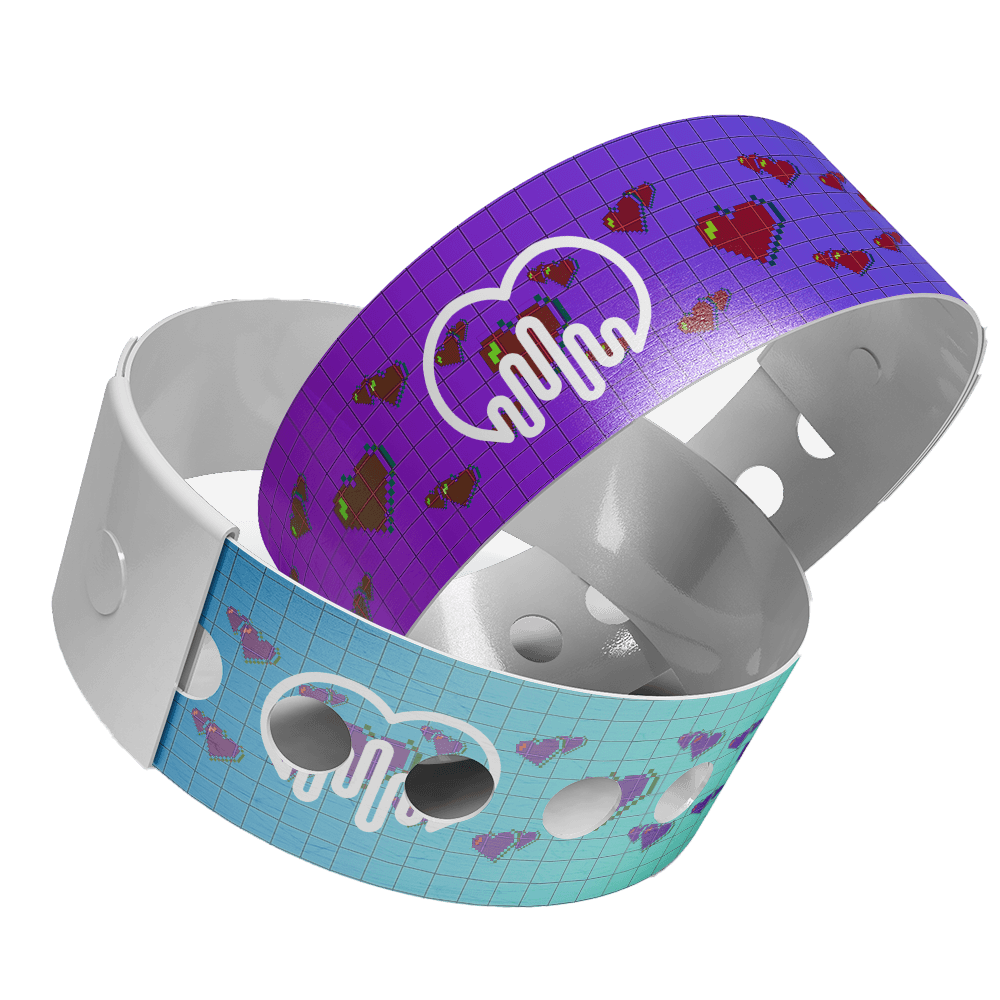
Some wristbands have poor printing, graphics, or fonts that look blurry, pixelated, or illegible. Some wristbands have mismatched, outdated, or inappropriate styles that clash with your event or venue.
These wristbands can tarnish the image of your event or venue, as they can look cheap, boring, or unprofessional. This can affect your brand, identity, or reputation.
How AAC’s Are The Best Event Wristbands For Organisers
At AAC, we take pride in providing the best wristbands in Australia. Our wristbands are more than “just a wristband” – they are a reflection of our commitment to quality, innovation, and customer satisfaction. Here are some of the features that make our wristbands stand out from the rest:
Quality:
Our wristbands are made from the highest quality materials available, such as Tyvek, vinyl, silicone, or woven fabric. These materials are strong, durable, and resistant to water, heat, UV, and abrasion. Our wristbands also have secure closures, such as adhesive, snap lock, or metal ring, that prevent tampering, transferring, or removing. Our wristbands also have high-quality printing, using state-of-the-art technology and equipment, that ensure crisp, vivid, and long-lasting graphics. And we’re the only manufacturer of Tyvek Wristbands. the standard type of event wristband in Australia. Australian made, ensures quality, which means less revenue lost to bad actors at your event.
Innovation:
Our wristbands are constantly evolving to meet the changing needs and expectations of our customers. We offer a wide range of wristbands, from the classic paper wristbands to the latest RFID wristbands, that cater to different types of events, venues, and purposes. At AAC we also offer a variety of customisation options, such as colours, patterns, logos, text, or barcodes, that allow you to personalise your wristbands to suit your brand, message, or event details. We also offer a range of value-added services, such as priority delivery, or design assistance, that make your wristband buying experience easy, fast, and hassle-free.
Customer Satisfaction:
Our wristbands are backed by our reputation as the leading wristband supplier in Australia. We have over 20 years of experience in the wristband industry, serving thousands of customers across various sectors, such as events, festivals, concerts, nightclubs, bars, hotels, resorts, theme parks, zoos, aquariums, museums, schools, hospitals, and more. AAC has a team of dedicated and knowledgeable staff, who are ready to assist you with any questions, queries, or issues you may have. We also have a 100% satisfaction guarantee, which means that if you are not happy with your wristbands, we will replace them or refund your money, no questions asked.
You’re Losing Money and Jeopardising Your Reputation: If You Shop Bargin Bin ‘Bands
If you’re shopping purely for the lowest price, you may be tempted to buy wristbands from suppliers who source their wristbands from overseas, especially from China, and label themselves as Australian Owned. However, this could be a costly mistake, as you may end up with wristbands that are inferior in quality, performance, and appearance, and that could put your event or venue at risk.
Here are some of the risks and drawbacks of buying wristbands from overseas suppliers:
- You may receive wristbands that are made from substandard materials that can break, tear, or fade easily, compromising the security and reliability of your wristbands.
- Often, these wristbands that have faulty closures that can be opened, closed, or swapped easily, allowing unauthorised entry or transfer of your wristbands.
- You’ll get wristbands that have poor printing that can be rubbed off, smudged, or faded easily, affecting the visibility and attractiveness of your wristbands.
- You may receive wristbands that have inaccurate or inconsistent colours, patterns, logos, text, or barcodes, resulting in confusion, errors, or complaints from your attendees or guests.
- You’ll probably receive wristbands that have delayed or missing delivery, due to customs, shipping, or logistics issues, causing you stress, inconvenience, or extra costs.
- You might receive wristbands that have no warranty, guarantee, or customer service, leaving you with no recourse, support, or assistance if you encounter any problems with your wristbands.
As you can see, buying wristbands from overseas suppliers could cost you more than you save, as you may lose money, customers, and reputation due to poor quality, performance, and appearance of your wristbands. That’s why it’s important to buy wristbands from a reputable and experienced Australian supplier, such as AAC, who can provide you with the best wristbands in Australia, at competitive prices, with fast delivery, and with excellent customer service.
Event Wristbands For Organisers Are An Invesment
You might be wondering, how much does quality wristbands cost? And is it worth the extra expense? The answer is, quality wristbands are not only affordable, but also a smart investment for your event or venue. Quality wristbands can help you save money, increase revenue, and boost your reputation.
How can quality wristbands help you save money? By preventing wristband tampering, which can lead to lost revenue and potential legal issues. Wristband tampering is when someone tries to enter or re-enter your event or venue without a valid wristband, or by using someone else’s wristband. This can happen in various ways, such as cutting, tearing, stretching, swapping, or counterfeiting wristbands.
Wristband tampering can cost you a lot of money.
Especially if you have a large-scale or high-priced event or venue, the potential loss is massive.
To illustrate, let’s use an event expecting an attendance of approximately 5000 people.
They charge $90/person for entry; of the 5000 in attendance, 25 people were to gain entry through wristband tampering. Despite the 25 people accounting for only 0.005% of all attendees, the event/venue has lost a total of $2250.00.
Using this example, you will start to see how quickly the losses can add up, especially over the period of a few days, weeks or even months depending on your event. That’s why it’s important to choose quality wristbands that are tamper-proof, such as Tyvek, fabric, silicone, or vinyl wristbands. These wristbands have features that make them difficult to duplicate, transfer, or remove, such as adhesive closures, locking sliders, embossed or debossed messages, or holographic designs. By choosing quality wristbands, you can prevent wristband tampering and protect your bottom line.
As you can see, quality wristbands are not only affordable, but also a smart investment for your event or venue. Quality wristbands can help you save money, increase revenue, and boost your reputation. Quality wristbands are more than just a wristband. They are a security tool, a customer service tool, and a marketing tool. They are a key factor in the success of your event or venue.
So, what are you waiting for? Order your quality wristbands today and see the difference for yourself!
That’s why you need to choose your wristbands wisely, and not settle for anything less than the best. At AAC, we offer the best wristbands in Australia, with the highest quality, innovation, and customer satisfaction. Our wristbands are secure, reliable, and stylish, and they can help you increase your revenue, enhance your image, and improve your experience. Don’t risk your event or venue’s reputation by buying wristbands from overseas suppliers who offer low prices but low quality. Buy wristbands from AAC, the trusted and experienced Australian supplier who offers high quality but competitive prices. Contact us today and let us help you find the perfect wristbands for your event or venue.







